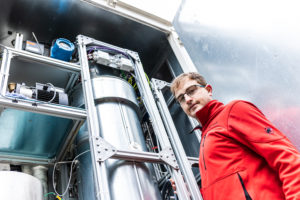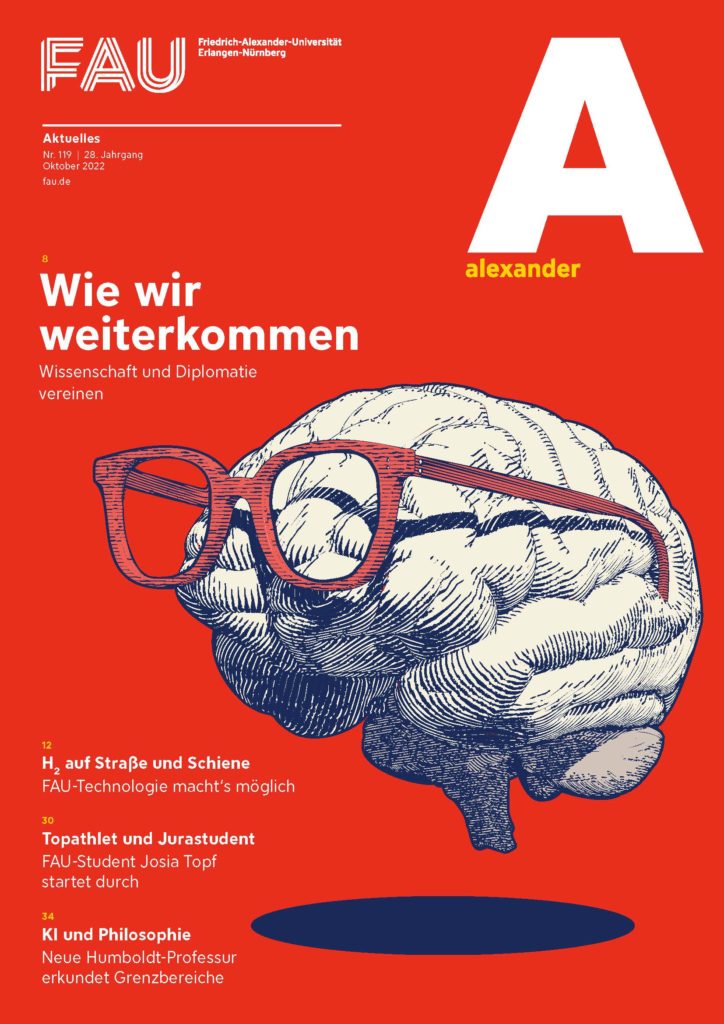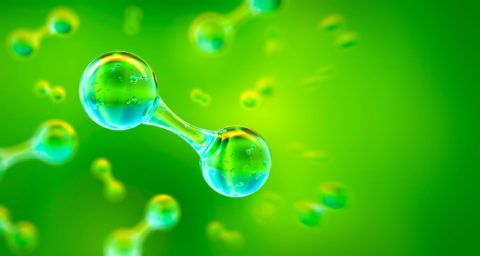Hydrogen in the tender
Researchers at FAU and HI ERN are continuing to work on developing a technology for using hydrogen as fuel for rail and road vehicles.
A hydrogen filling station opened on the Siemens campus in south Erlangen at the beginning of July 2022. There are now around 100 hydrogen filling stations across Germany, but the station in Erlangen is a world first because the hydrogen there is not stored at high pressure in tanks (as is usually the case), but is chemically bound in a carrier liquid similar to diesel and only released on site for refueling vehicles. The LOHC technology, short for liquid organic hydrogen carrier, was developed in Erlangen. Hydrogenious LOHC Technologies GmbH, an FAU spin-off, supplies the green hydrogen produced with its own electrolyzer and electricity from solar panels to the filling station in Henri-Dunant-Strasse in Erlangen. “LOHC can ensure an extensive supply of hydrogen without the need for building complex new infrastructure,” says Dr. Patrick Preuster, department head at the Helmholtz Institute Erlangen-Nürnberg for Renewable Energy (HI ERN). As hydrogen is highly explosive it currently needs to be either cooled to extremely low temperatures or stored at very high pressure. LOHC is different: Here, H2 is chemically bound to bebenzyltoluene, a heat transfer oil, and released on demand. LOHC is not flammable, which means it can be transported in the same way as conventional fuels in tanker trucks, trains, ships or via pipelines. In the new hydrogen filling station, it is stored like diesel in underground tanks.
A renaissance for tenders: Locomotives with LOHC containers

Preuster is part of a team conducting intensive research into using hydrogen to power not only vehicles on the road, but also on rails. At HI ERN, they are currently developing a demonstrator, where the train, or more precisely, a tender linked to the locomotive, is directly loaded with LOHC. The hydrogen is only released and converted to electricity in fuel cells during vehicle operation. “The release of H2 is now the subject of our research, as temperatures of between 250 and 300 degrees Celsius are currently required,” says Preuster. “This means that part of the hydrogen needs to be burned, which is of course not beneficial for the energy balance of the system.” The researchers are currently using many different approaches in their research to try and change this. The concepts include everything from new designs for catalyst bodies and bi-metal catalysts based on platinum and aluminum to a process called transfer hydration, where the H2 is initially transferred to an acceptor module such as acetone and can subsequently be dehydrated during a process that requires much less energy. The researchers are also looking into modifications of LOHC as the carrier substance aimed at releasing the hydrogen more readily.
The next step: Converting LOHC directly into electricity in the fuel cell
The research team in Erlangen is pursuing a particularly ambitious goal in conjunction with automotive supplier Schaeffler: the direct use of LOHC in fuel cells for power generation. “This would be the ideal solution – a risk-free substance loaded with green hydrogen is converted directly into electrical energy in the fuel cell,” explains Patrick Preuster. However, experiments conducted up to now show that a “detour” via transfer hydration is necessary here too, where the hydrogen is initially transferred to acetone thus forming isopropanol, which can be efficiently converted into electrical energy. During this process, the isopropanol and the acetone function as operating materials that are not consumed but rather circulated in the direct fuel cells, in a similar manner to engine oil in a combustion engine.
The current oil and gas supply crisis could make hydrogen technologies more attractive, because the marginal costs will eventually become significantly lower. At the same time, according to Preuster, legislation must be made simpler in order to drive H2 technology forward. For instance, the LOHC at the filling station in Erlangen is considered a chemical and not a fuel under current legislation, with all the bureaucratic and technical hurdles associated with this classification.
from Mathias Münch

In der aktuellen Ausgabe finden Sie Beiträge zu folgenden Themen: Wie Wissenschaft und Diplomatie zusammenspielen können, welche Wege mit der Wasserstofftechnologie LOHC gegangen werden sollen, einen Einblick in die abenteuerliche Donaufahrt der FAU-Römerboote, ein Interview mit dem Paralympicsathleten und Jura-Studenten Josia Topf sowie ein Porträt mit dem neuen Humboldt-Professoren Vincent C. Müller.
alex online lesen